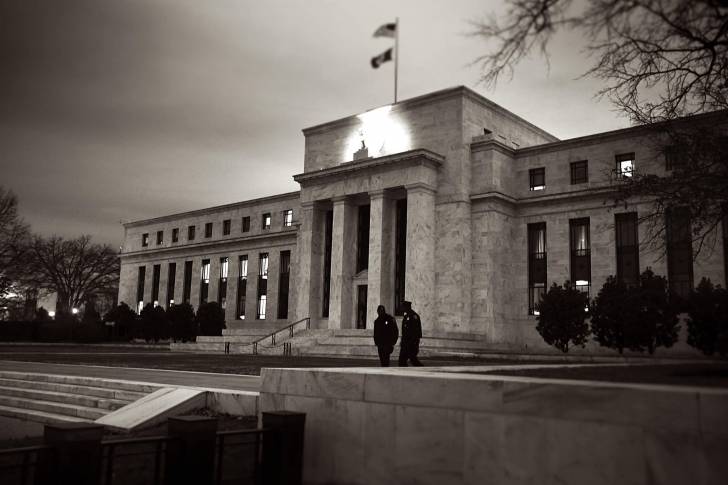by Brian Wesbury and Robert Stein, First Trust Portfolios LP

The Federal Reserve did what just about everyone expected earlier today and raised short-term interest rates by 0.25 percentage points. The federal funds rate is now in a range from 1.25 - 1.50% and the Fed is now paying banks 1.50% on their reserve balances.
Today's move was the third 25 basis point rate hike in 2017, matching the Fed's median projection for rate hikes that it made a year ago. At present, the Fed's "dot plot," which it releases at the last meeting of every calendar quarter, projects another three rate hikes in 2018. That would bring the funds rate to a range of 2.00% to 2.25% and the rate on reserves to 2.25%. The Fed did not change its forecast for another two or three rate hikes in 2019, but suggested a chance of a slightly higher peak for the funds rate in 2020. Regardless, the median Fed policymaker has the long-run funds rate at 2.75%.
Despite the lack of change in the projected path of interest rates, there were some noticeable changes to the outlook for the economy in the near term. In particular, the Fed now expects 2.5% economic growth in 2018 (Q4/Q4) versus a prior estimate of 2.1% and expects growth to be slightly stronger than previously estimated in 2019-20 as well.
Meanwhile, the Fed projects a lower bottom for the unemployment rate in 2018-19: 3.9% versus 4.1%. Oddly, the reason for the lower bottom is not the faster economic growth over the next few years but simply because, at 4.1%, the jobless rate is already lower than the 4.3% the Fed thought it would get to this year. Another way to think about it is that the Fed is still forecasting a 0.2 percentage point drop in the jobless rate in 2018 and no change in 2019, the same as it was forecasting back in September.
The only way we can square faster growth with no change in the drop in unemployment is that the Fed anticipates faster productivity growth in the next few years. We think that makes sense given that the tax cut now winding its way through Congress should enhance supply incentives and boost capital investment.
Where we differ with the Fed's forecast is that we expect growth to be around 3% per year in 2018-19 and the jobless rate to dip even further below the Fed's longer-run projection of 4.6%. Look for the jobless rate to finish next year at 3.7%, the lowest since the late 1960s. Look for it to finish 2019 at about 3.3%, which would be the lowest since the early 1950s.
In turn, we think investors should see the Fed's current projected path of interest rates as a floor for rate hikes in the next few years. That's a big difference from the current market consensus that foresees two rate hikes in 2018. Note that at the press conference, Fed Chief Yellen said "most" Fed policymakers had included the probability of tax cuts into their forecasts. This leaves some room for more upside as the tax cuts are likely to be enacted very soon.
The Fed's statement itself didn't have any significant changes versus the statement from November. However, it revealed that two Fed bank presidents dissented from raising rates today: Chicago's Charles Evans and Minneapolis's Neel Kashkari. Look for similar dissents early next year, but we think those will disappear by late 2018 as the case for rate hikes gets clearer.
In the meantime, the Fed will keep reducing its balance sheet at a pace of up to $10 billion per month for the fourth quarter, increasing that to $20 billion monthly pace in the first quarter of 2018, $30 billion in Q2, $40 billion in Q3, and $50 billion in Q4. After that, the Fed is projecting it would maintain that $50 billion monthly pace until it's satisfied with the size of the balance sheet. (For the foreseeable future, the balance sheet cuts would be 60% in Treasury securities and 40% in mortgage-related securities.)
The bottom line, in our view, is that monetary policy remains too loose and the economy can handle higher short-term rates. Nominal GDP (real GDP growth plus inflation) is up 3.5% per year in the past two years, leaving plenty of room for more rate hikes in 2018-19.
Brian S. Wesbury, Chief Economist
Robert Stein, Dep. Chief Economist
Click here for PDF version














